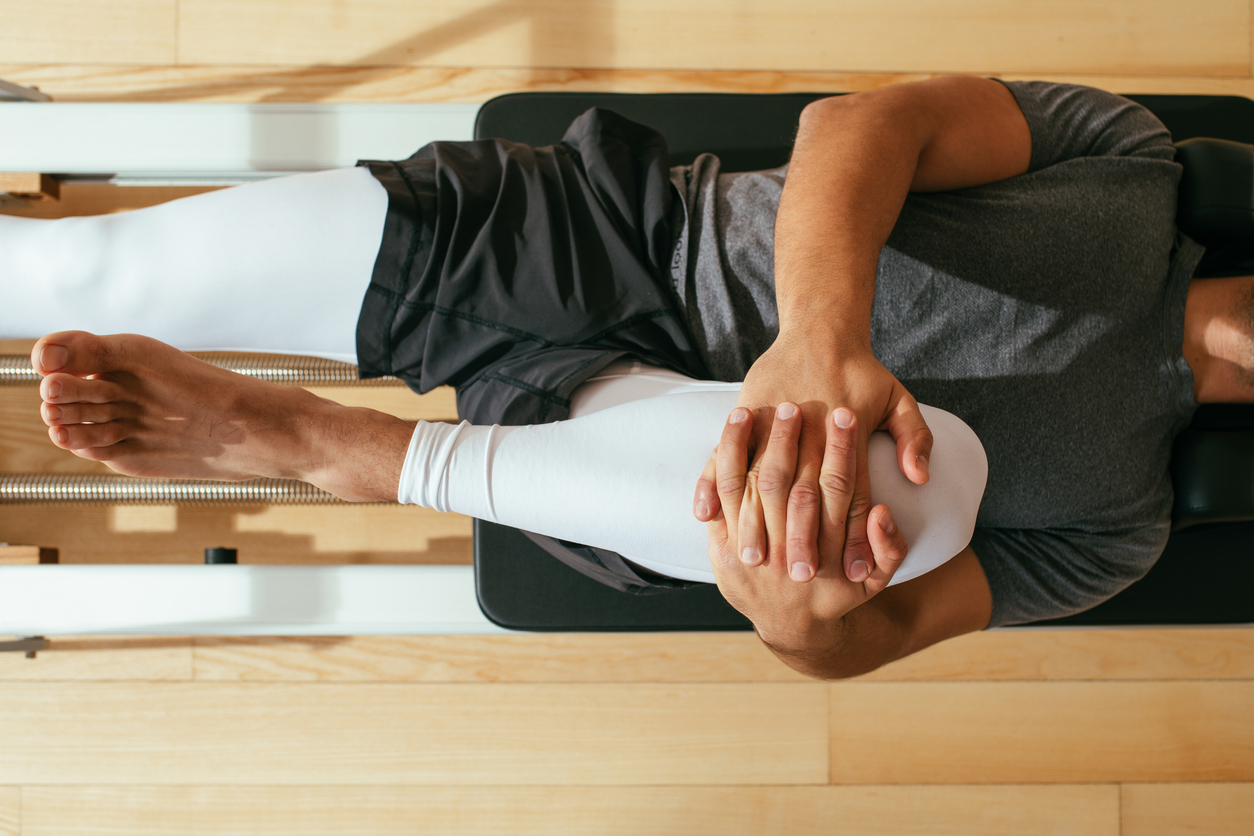Running has seen a surge in popularity in recent years, but this has led to a rise in knee pain.
According to a study in the British Medical Journal (BMJ), around 4 in 5 runners (79.3%) develop an injury that temporarily prevents them from running at least once a year - and the main location of these injuries is the knee.
“Running itself is good for you but if you develop bad habits or run badly then you will be prone to injury,” says Andy Goldberg OBE, consultant orthopaedic surgeon at the Wellington Hospital in London, UK.
If you develop knee pain during or after running, it could be due to a number of reasons.
What causes knee pain when running?
There are many causes of knee pain, but 4 of them are commonly brought on by running: runner’s knee, jumper’s knee, iliotibial (IT) band syndrome and cartilage damage.
Runner’s knee (patellofemoral pain syndrome)
This is an overuse injury thought to be caused by stress on the joint between your kneecap and thigh bone.
Jumper’s knee (patellar tendinitis)
This is caused by overloading the knee, often from jumping. Frequently overloading the knee can wear out a tendon in the joint, making it less able to cope with load-bearing, such as when walking or running.
IT band syndrome (iliotibial band syndrome)
This is the most common cause of pain around the knee in runners. It's an overuse injury that happens when the connective fibres that stabilise the knee rub against the thigh bone and tighten up.
Cartilage damage
This is caused by a sudden injury, such as a sports injury, or gradual wear and tear (osteoarthritis).

Pain while running
If you develop knee pain while running, it’s worth asking yourself the following questions to help determine the cause:
- Do you get a dull or severe pain at the front, around your knee or behind the kneecap?
This could be runner’s knee, which you’re more likely to get if you have problems in the alignment of your knee joint and muscle weakness.
- Do you notice an ache or pain just below your kneecap? Does it come on gradually rather than suddenly? Does the pain reduce after you have warmed up?
These are all signs that you may have jumper’s knee, which is linked to overtraining, poor technique and running on hard surfaces.
- Do you get pain around the outside of the knee that occurs at the same distance each time? Does it get worse if you continue, particularly if you run downhill?
This could be IT band syndrome, which is linked to muscle weakness, tightness in the band and having different leg lengths.
- Does the pain disappear when you stop running?
This is also a sign of IT band syndrome, which reduces when the IT band relaxes.
- Do you have existing pain in and around the knee that worsens when you run?
This could be cartilage damage caused by osteoarthritis, which is more likely as you get older, if you are female or overweight.
Pain after running
If you mainly experience knee pain following a run this could be a sign of jumper’s knee.
But this may also affect your performance over time, so it's worth monitoring whether the pain gradually starts to affect you during a run as well after.

Should I stop running?
It’s important to listen to your body and avoid running if you’re in pain. Only start running again when you have recovered and the pain has improved.
To prevent future knee pain or injuries, there are various knee exercises for runners you can do to strengthen the muscles around the knee.
You can also learn how to run correctly to help reduce your risk of injury in the future.
When to see a doctor
If you still feel pain after a week’s rest you should see a doctor who may recommend physiotherapy.
You should also see a doctor if you have any of the following symptoms:
- a rapid onset of pain
- difficulty weight bearing
- high temperature (fever)
- significantly reduced movement of the knee
- persistent bone pain
- pain at night or when resting
- unexplained weight loss
- an unexplained lump
- a previous history of cancer


